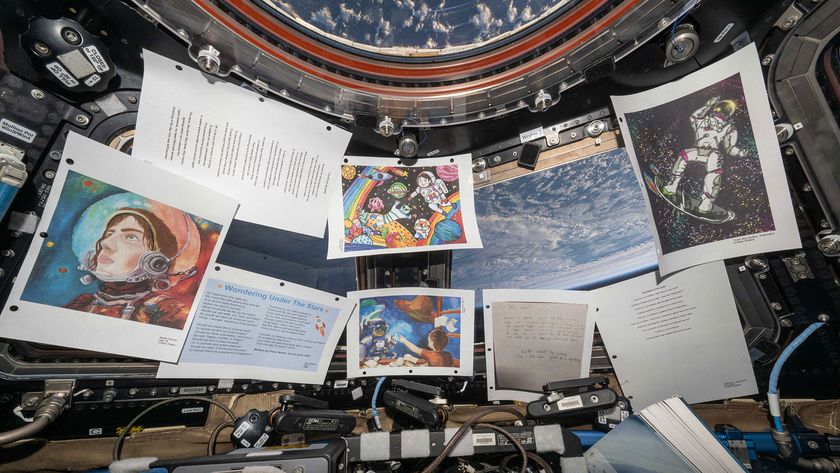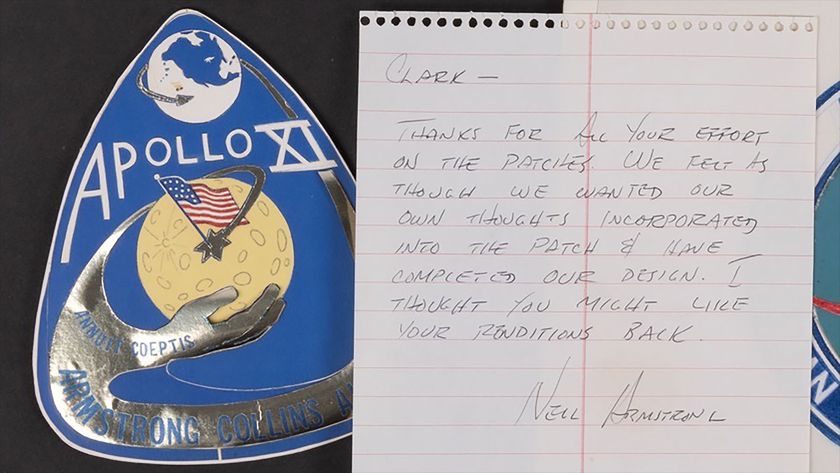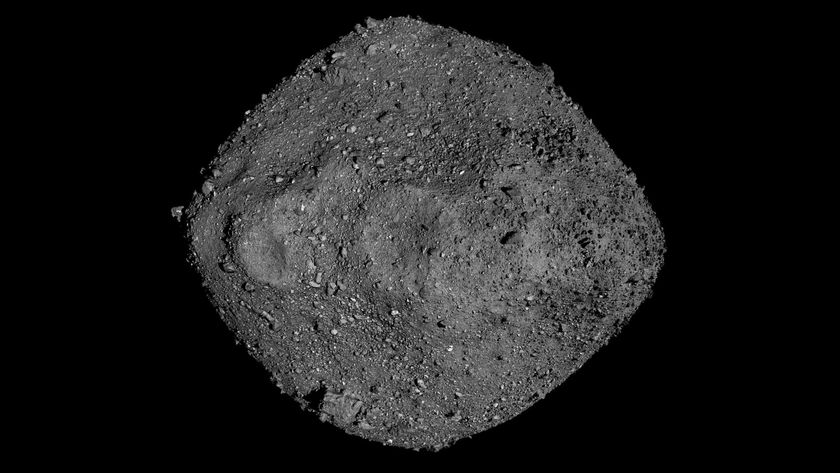6 Mock Mars Explorers Emerge from 520-Day Virtual Mission
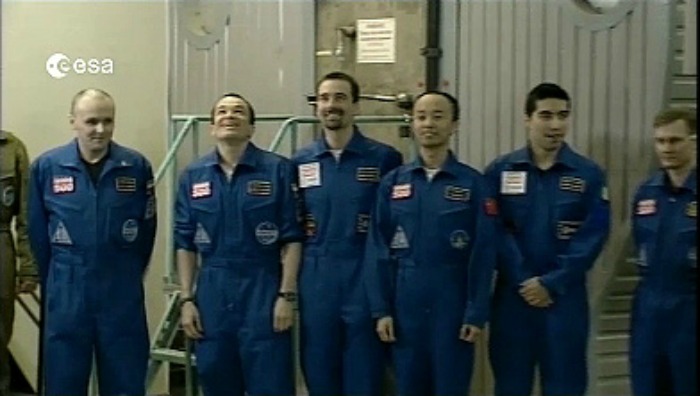
This story was updated at 7:25 a.m. EDT.
After being isolated from the rest of the world for nearly a year and a half, sealed away in a mock spacecraft, six volunteer astronauts "returned" to Earth today (Nov. 4) to end a simulated mission to Mars and back.
The hatch of the pretend Mars500 spaceship, which is actually a special isolation facility at the Russian Institute for Biomedical Problems in Moscow, was opened at 6 a.m. EDT (1000 GMT) this morning to mark the successful completion of a 520-day simulated journey to the Red Planet. The six volunteer crew members had been living and working in the Mars500 facility since June 2010.
The international Mars500 crew is made up of Italian engineer Diego Urbina, French engineer Romain Charles, Russian physiologist Alexandr Smoleevski, Russian surgeon Sukhrob Kamolov, Russian engineer Alexey Sitev and Chinese astronaut trainer Wang Yue.
After an official unlocked the large door to the mock spacecraft and removed a special seal, the first Mars500 crewmember to cross the threshold was Kamolov, followed by Charles, Yue, Urbina, Smoleevski and finally Sitev. [Mars500: Photos From Russia's Mock Mars Mission]
"The international crew of the Mars500 experiment has completed the 520-day experiment," Mars500 commander Sitev reported to project officials after emerging from the isolation habitat. "The program has been fully completed. All the crewmembers are in good health. We are ready to continue the investigations."
The crewmembers expressed their pride at completing the lengthy experiment, and spoke about how their efforts will help future exploration plans.
Get the Space.com Newsletter
Breaking space news, the latest updates on rocket launches, skywatching events and more!
"One year and a half ago, I was selected by the European Space Agency to be part of the Mars500 crew," Charles told the audience at the hatch opening ceremony. "Today, after a motionless trip of 520 days, I'm proud to prove, with my international crewmates, that a human journey to the Red Planet is feasible. We have all acquired a lot of valuable experience that will help in designing and planning future missions to Mars. We're ready to embark on the next spaceship going there."
The six participants will now remain in medical quarantine for at least three days before taking part in a news conference on Nov. 8.
An ambitious simulation
The elaborate Mars500 project, carried out by the European Space Agency (ESA) and Russia's Institute of Biomedical Problems, was the longest spaceflight simulation ever conducted, and reportedly cost $15 million. The experiment aimed to simulate a manned mission to Mars from beginning to end.
Researchers will use the data collected throughout the Mars500 mission to better understand the physical and psychological challenges that astronauts will face on long-duration missions to Mars, or other deep-space destinations.
"The longest night in the world is about to finish," Urbina said Thursday (Nov. 3) via Twitter.
Urbina showed his humorous side as he added, "'We come in peace,' I always wanted to say that," before adding Thursday's date to the post.
Since there has never been such a long spaceflight simulation before, the Mars500 project is expected to yield unique and important data, said European astronaut Christer Fuglesang, who heads the science and application division at the Directorate of Human Spaceflight and Operations at the European Space Agency.
"From a logistics and communications point of view, it was quite realistic," Fuglesang told SPACE.com.
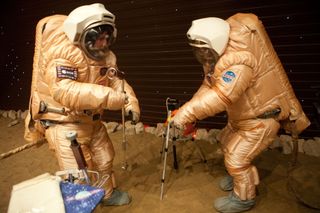
While certain aspects of a real mission to Mars cannot be simulated, such as the microgravity environment of space, the crew members did perform science experiments, collect medical data, and even performed mock "Mars walks" on a surface constructed to resemble the Red Planet.
"After more than one year rehearsing the same experiments with the same equipment and the same test subjects, it's sometimes hard to find as much interest as during the first session 500 days ago," Charles wrote in diary entry on Oct. 25. "We still perform each experiment as efficiently as before — and often more efficiently — but what we're looking forward to is discovering the conclusion of all the studies being followed by the world-wide community of scientists."
The physical and psychological health of the Mars500 participants was closely monitored throughout the mission. The results of the various tests will help researchers better understand how to help astronauts cope with waning motivation or fatigue during long spaceflights.
"It was difficult to realize it while we were enduring it but now that we're close to the end I can say without a doubt that, except for a few colourful days, our months of August and September were dull," Charles wrote in his Oct. 25 diary entry.
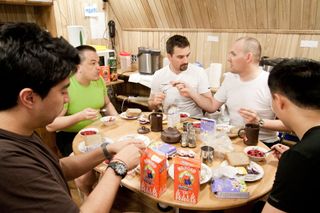
How to cope with a long mission
Previous studies have demonstrated this fatigue in the third quarter of long missions, and Mars500 planners expected to see dips in the mood of the participants in the months leading up to the end of the experiment, Fuglesang said. [Infographic: How the Mars500 Mars Simulator Works]
"You've done most of the exciting things, you're just coming home and there's nothing really exciting happening anymore," he explained. "With Mars500, from August to September, it was maybe a bit harder for them to endure, but that's completely normal."
The data collected from the Mars500 participants will be valuable to space agencies as they plan future long-duration flights. But the simulation also benefitted ground teams, Fuglesang said, as it gave them a unique opportunity to practice carrying out an elaborate and lengthy mission.
"We are also getting training information for the ground crews," Fuglesang said. "We're learning how to operate these missions."
Once the data from the Mars500 mission has been analyzed, ESA officials will determine how best to design follow-up experiments, he added.
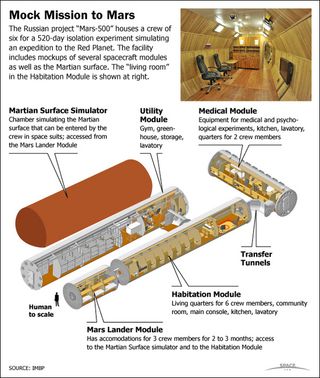
In fact, Russia is interested in carrying out an experiment on the International Space Station to simulate aspects of a mission to Mars, according to the Russian Itar-Tass news agency.
"We are interested in staging such an experiment in actual conditions of zero gravity," Vitaly Davydov, deputy head of Russia's Federal Space Agency (Roscosmos), told Itar-Tass.
Davydov told the Russian news agency that specific plans have yet to be made, but that such a project could be possible after 2014. The simulation would likely involve at least two astronauts living aboard the space station for at least 18 months, according to Itar-Tass.
You can follow SPACE.com staff writer Denise Chow on Twitter @denisechow. Follow SPACE.com for the latest in space science and exploration news on Twitter @Spacedotcom and on Facebook.
Join our Space Forums to keep talking space on the latest missions, night sky and more! And if you have a news tip, correction or comment, let us know at: community@space.com.

Denise Chow is a former Space.com staff writer who then worked as assistant managing editor at Live Science before moving to NBC News as a science reporter, where she focuses on general science and climate change. She spent two years with Space.com, writing about rocket launches and covering NASA's final three space shuttle missions, before joining the Live Science team in 2013. A Canadian transplant, Denise has a bachelor's degree from the University of Toronto, and a master's degree in journalism from New York University. At NBC News, Denise covers general science and climate change.
